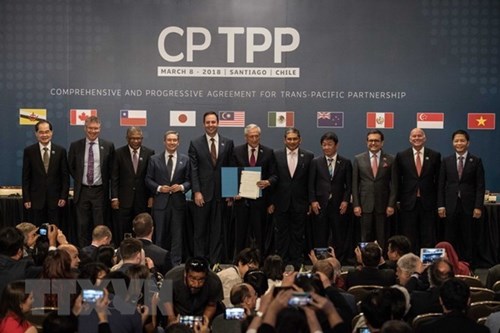At the meeting with his Chilean counterpart Roberto Ampuero, Japanese Foreign Minister Taro Kono expressed hope that the two countries will lead efforts to promote free trade as members of the CPTPP.
    |
 |
|
The Comprehensive and Progressive Agreement for Trans-Pacific Partnership (CPTPP) was signed by 11 countries in Santiago, Chile on March 8. |
The meeting aimed to strengthen cooperation between the two countries in multiple areas, including disaster response, under the administration of Chilean President Sebastian Pinera.
The CPTPP is a renegotiated trade deal born out of the Trans-Pacific Partnership Agreement (TPP) after the US pulled out from the TPP last year.
The revised pact was signed by the remaining 11 TPP member states, namely Australia, Brunei, Canada, Chile, Japan, Malaysia, Mexico, New Zealand, Peru, Singapore, and Vietnam in March 2018.
At least six member states are required to ratify the CPTPP to put it into force. The deal is expected to boost economic growth, create more jobs, reduce poverty, and improve the quality of life for people in member countries. It will create one of the world’s largest free trade blocs with a combined market of 499 million people and a GDP of around USD 10.1 trillion, accounting for 13.5 percent of the global GDP.
With 71 out of 71 votes, the Australian Lower House on September 17 passed the CPTPP. The deal will be submitted to the Senate for consideration and approval.
It has been passed by Mexico, Singapore, and Japan and is expected to be ratified by New Zealand, Peru, and Canada in the coming months.
Meanwhile, the member states also discussed measures to expand the CPTPP. Currently, Thailand and Columbia have also shown their interest in joining the deal.
Source: VNA